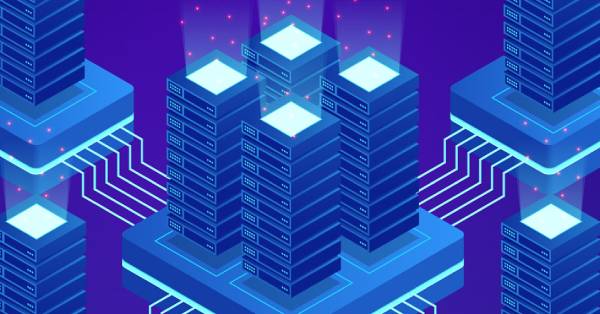Insights
The Future of SAP ASE: Plotting the Course after Sybase EoMM
October 7, 2021
In 2018, SAP Adaptive Server Enterprise (ASE), also known as Sybase, announced to the world the end of mainstream maintenance (EoMM) by 2025. The announcement left thousands of organizations worldwide who depend on Sybase/ASE for their daily operation in distress. While the platform has been maintained thus far, SAP has decided to refocus investments away from Sybase. Remaining customer must now weigh in the options to either migrate or maintain their existing platform, while enduring a rapidly decreasing return on investment.
What Does Sybase’s EoMM Mean for Current Users?
According to SAP, paid support for Sybase will remain available years beyond the 2025 EoMM deadline; but will cease to release new patches or enhancements for their platform. While the availability of this narrow scope of maintenance will provide users with some insurance, the reliability of the platform will suffer in a few impactful ways.
Dwindling Innovation
The depreciation and lagging efficacy of Sybase’s innovation can already be felt by users. Prior to the 2018 EoMM announcement, Sybase was trailing behind competitors, providing slow and halting platform enhancements. It can thus be expected, Sybase’s market leadership to suffer as competition vastly surpasses through new product innovation.
Security Concern
As SAP monitors vulnerabilities in its platform and addresses severe threats, this will come to an end in 2025, impacting both security and assurance for users. For the mass majority (if not all) of organizations, this is an unacceptable prospect as the potential fallout could be catastrophic, considering the average cost associated with data breaches in 2021 have reached $6.8 Million.
Expensive Upkeep
As the market migrates from Sybase, the skills associated with maintaining the platform depreciate both from within SAP and from the market. Resulting in a gradually increase of cost for maintaining and optimizing the platform. While organizations have the option to hire in-house talent, work directly with SAP, or a third-party vendor for support, the ROI on one’s bottom line wouldn’t be practical in the long run. Migrating would reduce the financial cost of upkeeping support.
What Are Your Options to Migrate?
For the sake of streamlining the discussion within this article, we will highlight two platforms that provide the most cost-effective and straightforward migration: Hanna 4/H and Azure SQL.
SAP HANA
SAP HANA is a high-performance in-memory database that provides advanced analytics on multimodel data, on-premise and in the cloud. SAP HANA breakdowns transactional and analytical silos within an organization for real-time decision-making. Some of the highlighted features include:
- Fully managed multi-cloud environment with seamless hybrid deployment and on-premise
- Security, privacy, and anonymization with proven enterprise reliability
- Connected, distributed data without the need to manually collect
- Advanced data tiering to quickly manage performance, cost, and storage
Learn more here.
Azure SQL
Azure SQL Database is an intelligent, scalable, relational database service built for the cloud. Optimize performance and durability with automated, AI-powered features that are always up to date. With serverless compute and Hyperscale storage options that automatically scale resources on-demand, you’re free to focus on building new applications without worrying about storage size or resource management. Some of the highlighted features include:
Fully managed SQL database that automates updates, provisioning, and backups so you can focus on application development
- Flexible and responsive serverless compute and Hyperscale storage rapidly adapt to your changing requirements
- Layers of protection, built-in controls, and intelligent threat detection keep your data secure
- Built-in AI and high availability maintaining peak performance and durability with an SLA of up to 99.995 percent
Learn more here.
Where Azure SQL Fits the Bill
Your decision to either choose SAP HANA, Azure SQL, or any other platform is determined by a variety of factors – such as having your platform revolve around a piece of technology, the size of your dataset or your predetermined technical requirement. Below we outline a few select factors that differentiate Azure SQL from the competition and may influence your decision-making.
Compatibility
Founded in the mid-1980s, Sybase was originally known as ‘Sybase SQL Server.’ Around this time, Microsoft was a Sybase distributor, selling the Sybase SQL Server under the name of “Microsoft SQL Server.” In 1994, Microsoft purchased a copy of the source code and began innovating independently as part of the Windows platform.
Despite the platforms intention to become a competing platform in the market, they were derived from the same product and share a common data code base. Meaning, the compatibility, assurance and cost mitigation offered by the platform is unmatched by any other competitors on the market. Other similarities between the platforms include being derived from a similar ANSI SQL standard, supporting the same database constructs such as JOINS, SETS, Query Operators etc., including Database objects like Tables, Indexes, Views, Triggers, Stored Procedures etc.
Accelerated Migration
Microsoft offers an accelerated migration from SAP ASE databases to SQL Server or Azure SQL Databases with its proprietary tool, SQL Server Migration Assistant for Sybase (SSMA).
By using SSMA, users can review their database environments including assessing objects for conversion, map database schemas, migrate database objects, load converted database objects and migrated data to SQL Server/ Azure SQL Database.
Based on Zelusit’s experience with the tool, SSMA will accurately and automatically migrate anywhere from 50-90% of Sybase data, objects, and schema to Azure SQL. Leaving the organization to manually migrate the leftover. After taking the time to validate the migration and remediate errors identified through the process, SSMA offers significant time and cost savings when compared to competing platforms.
Backed by Azure
Azure’s current market penetration, continued focus and investment into innovation, should all play a role in instilling confidence with implementing Azure into your ecosystem. Not only would Azure SQL provide competitive upgrade to your existing Sybase database, but Microsoft’s client focus offers the assurance that they will provide reliable solutions for decades to come.
Why Trust Zelusit
Given the competitive differentiators of Azure’s SQL platform, and tools designed to assist Sybase to SQL migrations, organizations may be misled into believing that this is a simple task. However, the complexity of the Sybase environment, combined with the day-to-day responsibilities of in-house teams to maintain their IT enterprise environments, makes this project quite impracticable.
Our clients rely on Zelusit’s expertise to streamline their projects and guarantee success from our developed best practices. We have 20+ years of experience driving modernization through road mapping, architecting, deploying enterprise databases, end-to-end data estates, offering long-lasting transformation and business impact.
Zelusit is regarded as Microsoft’s go-to partner for Data & AI on Azure. We are proud to have been recognized as the winner of Microsoft’s 2021 Analytics Impact Award, Artificial Intelligence Impact Award and Data Platform Modernization Award.


